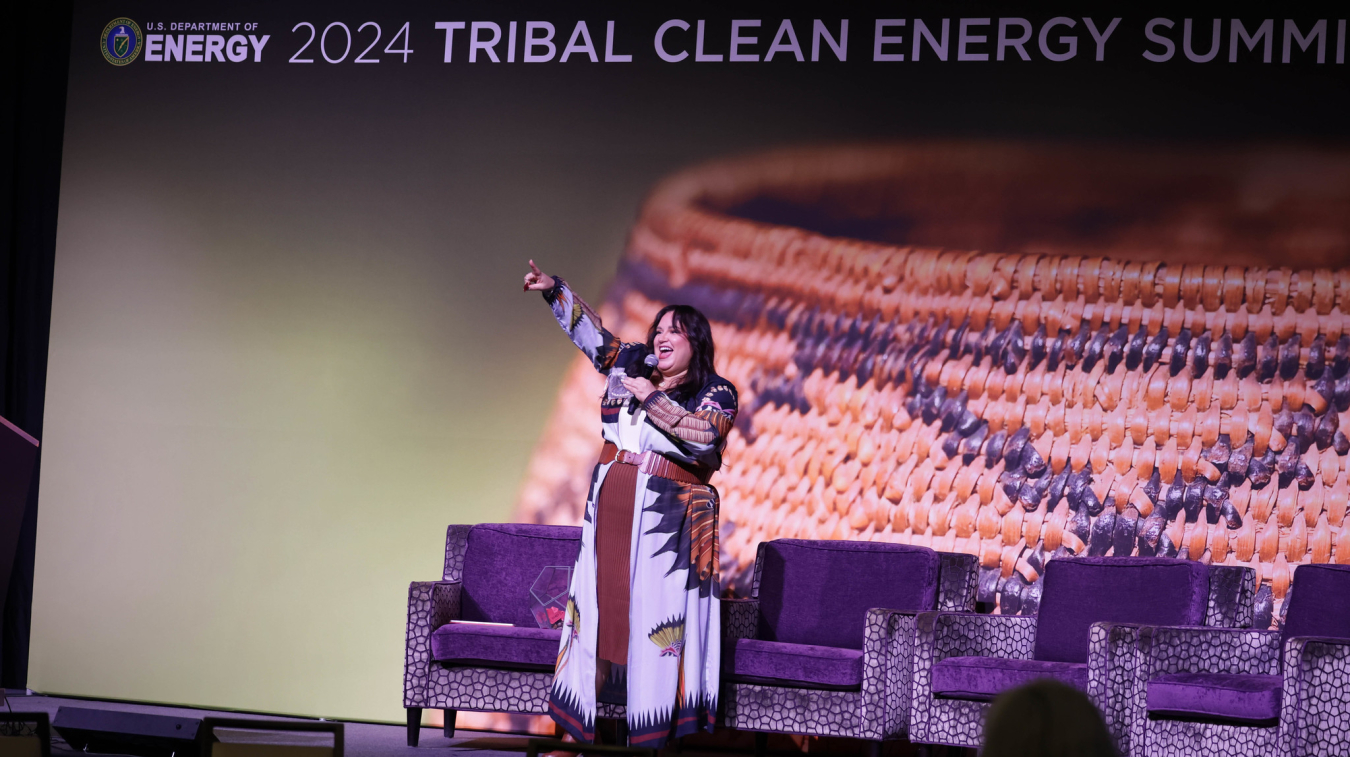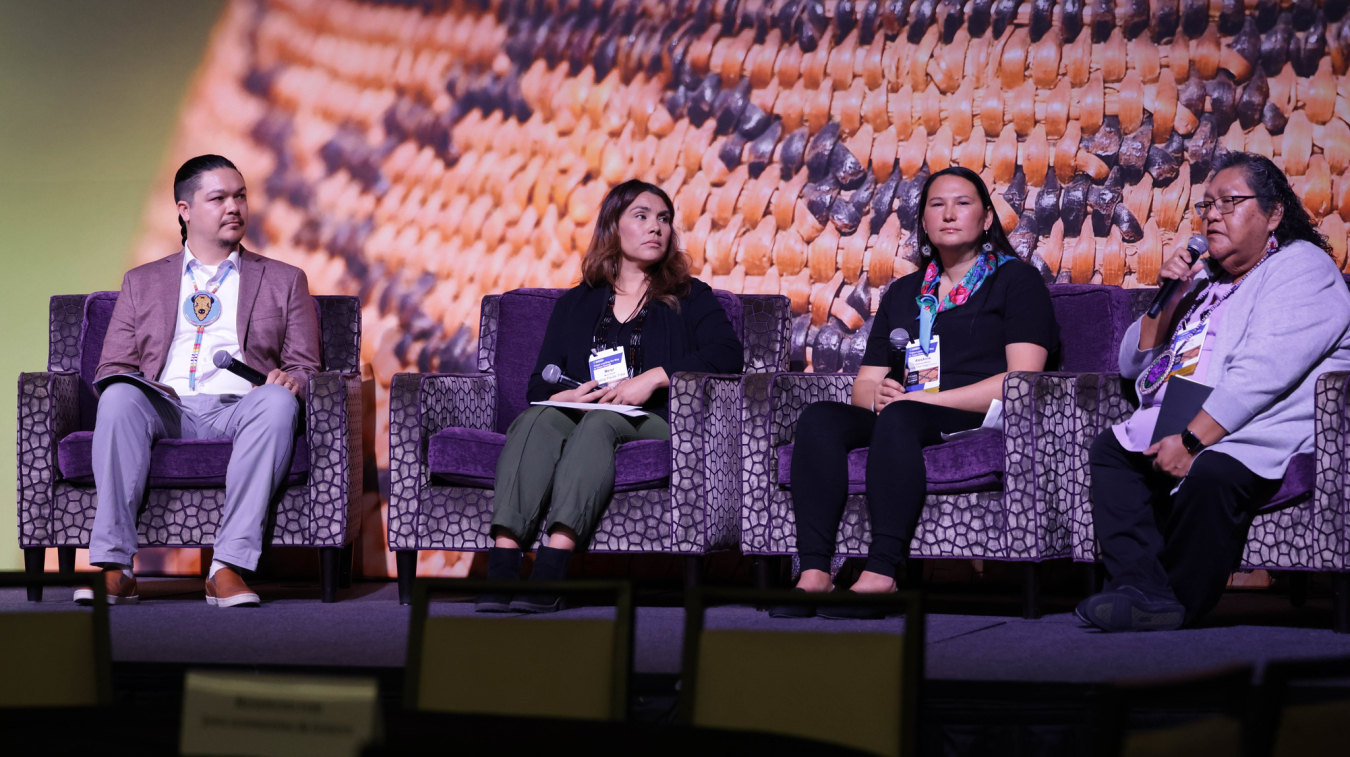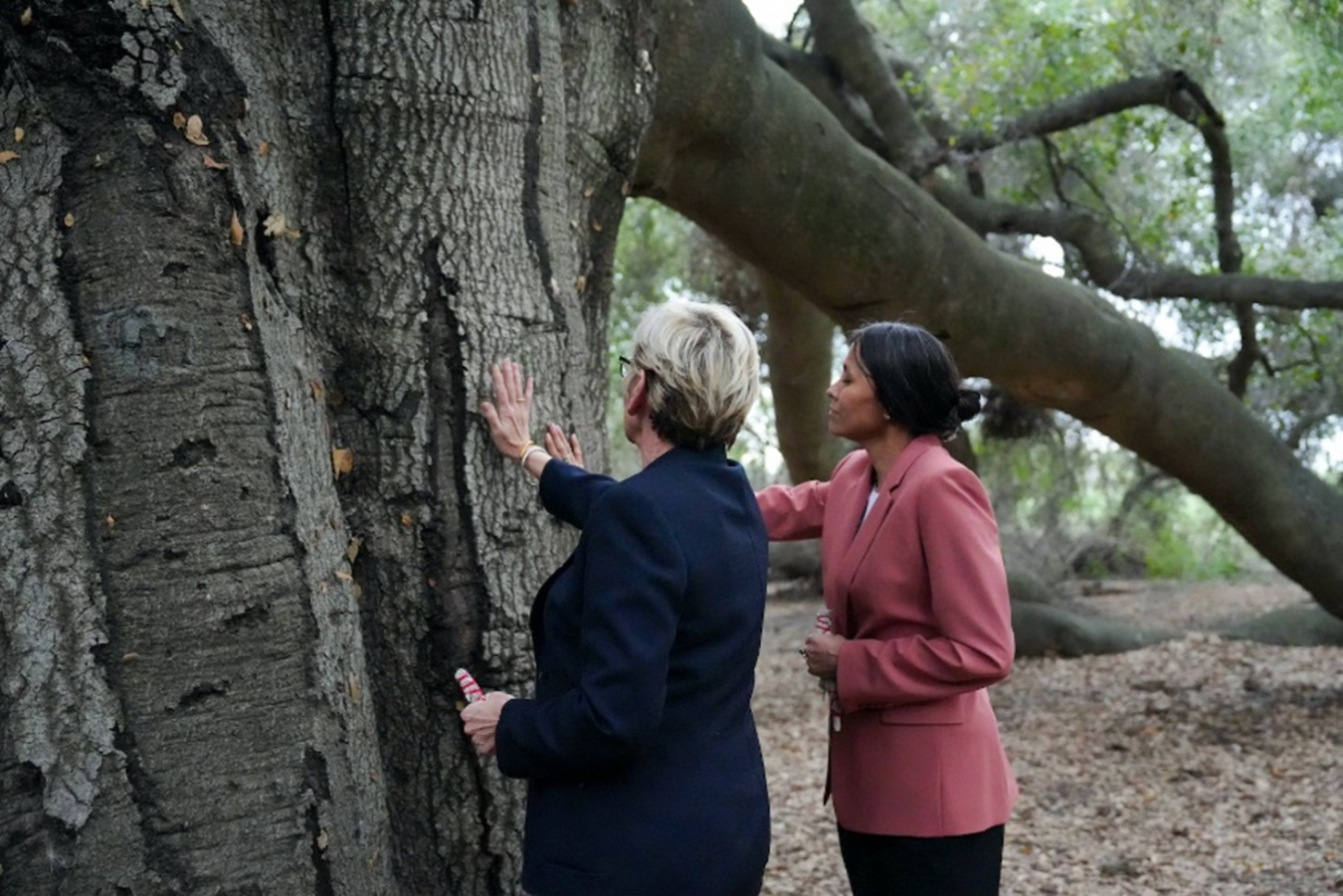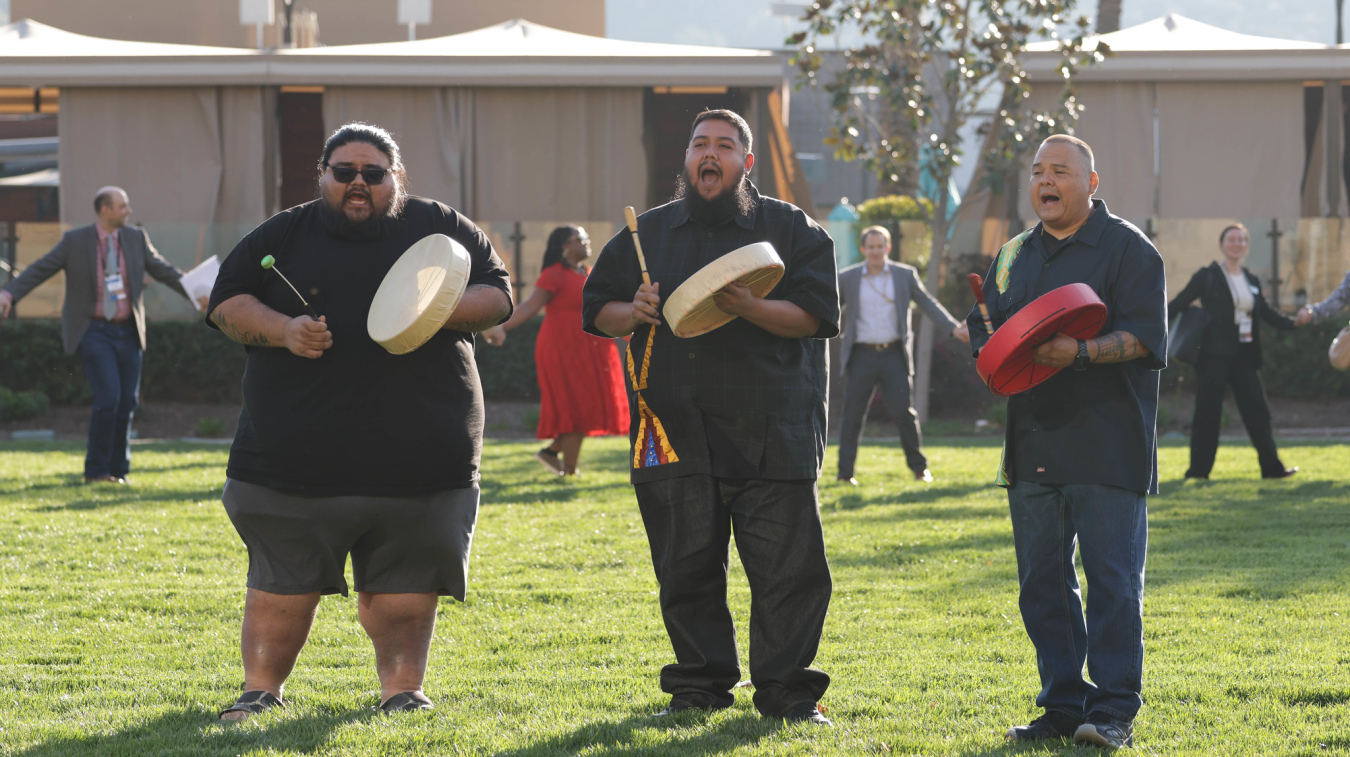Tribal Leaders, Energy Partners Convene at Placed-Based Clean Energy Summit
Office of Indian Energy Policy and Programs
April 16, 2024Tribal Leaders, Energy Partners Convene at Placed-Based Clean Energy Summit
It began with a basket. And it culminated in a slam dunk.
A Pechanga basket, the iconic image chosen for the 2024 Tribal Clean Energy Summit, evoked Tribal culture and resilience, and instilled a sense of place. The venue, a Tribally owned resort far removed from the U.S. capital, signaled another pivot from the standard fare. The theme, “Tribes Leading the Way in Clean Energy,” placed Tribal voices and visions at center court.

With interest at an all-time high, the biennial event drew record numbers, and the outcome eclipsed expectations.
More than 700 Tribal leaders, staff, and partners gathered in the homeland of the Pechanga Band of Luiseño Indians for the Tribal Clean Energy Summit, held outside of Washington, D.C., for the first time since 2014. Attendees were encouraged to network, share ideas, and discuss clean energy solutions that support Tribal energy sovereignty.
“It’s been a great two days of learning, listening, sharing ideas, and we hope everybody that comes to this conference walks away with new connections, new plans, new inspiration for their communities,” said Wahleah Johns, Director of the U.S. Department of Energy (DOE) Office of Indian Energy.

The two-day event, held at the Pechanga Resort Casino in Southern California, kicked off Feb. 27 with a screening of “Covenant of the Salmon People.” Seated in a crowded ballroom, attendees were transported to the rolling green meadows and snowcapped mountains of rural Idaho, home to the Nez Perce Tribe.
“Salmon was the first to stand up and take care of us,” said a narrator in niimiipuutímt (Nez Perce language). “And then they all became silent. Because of this, we must speak for them.”
Striking a similar chord in her keynote address the next morning, U.S. Secretary of Energy Jennifer M. Granholm spoke of her visit to Wi’Áaşal—the Great Oak. The majestic tree, which has stood nearly 1,000 years in the ancestral homeland of the Pechanga Band, embodies the strength, wisdom, longevity, and determination of the people.
“It’s the legacy we hope we will leave because the projects we’re investing in are like saplings that we’re planting across the country,” said Granholm.

In the ensuing panel discussions, a deep bench of Tribal representatives and DOE staff kept the action up-tempo, flowing through a host of project development plays, from offshore wind to the federal loan application process to sustainable energy supply chains.
The clincher came when DOE officially announced funding for Tribal energy projects, including:
- A historic funding selection of over $200 million for 12 projects serving at least 30 Tribal communities through the Office of Clean Energy Demonstrations
- $25 million in new funding available for Tribal clean energy projects through the Office of Indian Energy—now upped to $50 million, with applications due May 30, 2024
- $18 million for high-impact clean energy projects led by Tribal and local governments.
The newly announced windfall represents next-level federal investment in Tribal energy development, adding to the $75 million committed to Tribal energy projects selected in 2023. In total, the Office of Indian Energy has invested more than $120 million in Native communities across the contiguous 48 states and Alaska since 2010. Together, these investments have yielded 46 megawatts of new electricity generation—enough to power almost 9,000 Tribal buildings.
The Summit garnered positive feedback, including how the location was more accessible and the programming was relevant and provided access to DOE program offices. When asked about the future of energy in Indian Country, interviewees used words like “resiliency” and “capacity building,” and described a long but achievable path toward greater energy reliability and sovereignty.

Pi-Ta Pitt, Tribal Utility General Manager at Pechanga Western Electric, expressed a similar level of optimism fostered by the potential brimming throughout the summit.
“I hope they gain confidence for their visions in their communities and know that they aren’t alone—that they have allies in Indian Country and in the federal government, and most likely state and county [governments] too,” Pitt said. “We need to recognize who we are and start working together.”
Watch the event recordings, revisit the full agenda of the summit, and view event photos in the 2024 Tribal Clean Energy Summit Flickr album.

